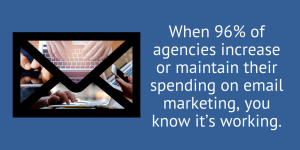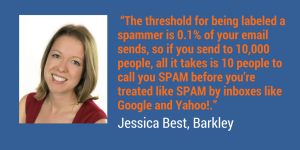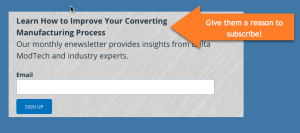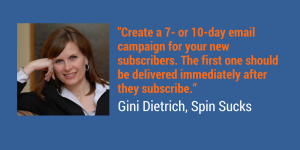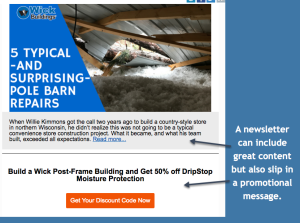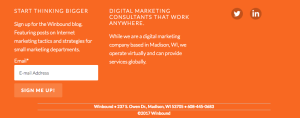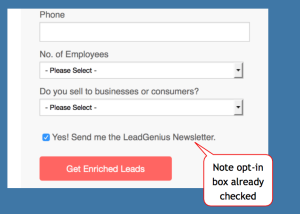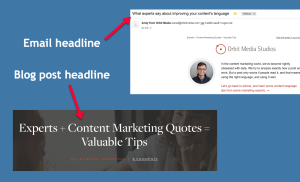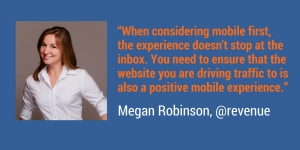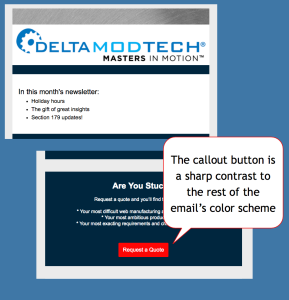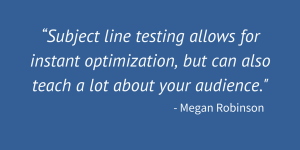Social Media Strategy That Works
Social Media Strategy That Works
When I started out as a Social Media/Marketing Manager I realized right away that you need to be organized to an extent I wasn’t prepared for. Winging it only makes things take longer and makes you stress out. As part of the marketing team at @revenue, I have learned some handy strategies for not only laying out campaigns but how to make them take flight.
Let’s talk about Campaigns.
Campaigns are a whole different animal from regular social media posts, which are usually one-off posts not pertaining to an ongoing awareness campaign or event. Campaigns are preplanned, precalculated, and usually, a series of social media posts thought through to the maximum extent. A well-thought-through campaign includes the goals of the posts, specific target audience, and message. Campaigns make reviewing the metrics all that easier, too. Helping you track what’s working and what’s not. And you know how we love to try it, track it, and change it- especially when it comes to the ever-changing world of social media.
Here are some basic steps to creating an effective social media campaign.
- The first part of laying out a social media campaign is to do some deep thinking on the goals and objectives. What is the purpose of the new campaign? What does your client have going on right now that would make a good campaign? Are they offering a workshop or class in a couple of months? Then now’s the time to get started with planning. They say that you’re 40% closer to reaching your goals when you lay them out and get specific, so try to use SMART goals when creating a new campaign.
- The 5 W’s - When creating a new campaign, you want to make sure you are answering the basic “Ws” of Who, What, When, Where & Why’s of the campaign. These fundamental 5 W’s cover all the bases.
Why - why are you creating the content? What is your goal? How will this benefit the business?
Who - is your audience? Being as specific here as possible is key.
What - do you want this content to achieve?
When - when and how are you going to develop the content, and how long will the campaign run for?
Where - are we going to publish, and on what platforms? Remember that each platform has slightly different strategies so make sure you customize your content for each.
- Next, you’re going to want to get very clear on who your audience is, what tone your messaging will take on, and the time frame - including the start and end date of the campaign.
- Then you delve into the nitty-gritty, such as what hashtags you’ll use to get the campaign the most exposure, and what link and CTA you’ll be using. You might be thinking that this is all just a huge waste of time, just post it already, BUT trust me, you’re going to love working this way once you start and you’ll never go back.
- Each campaign should have its own aesthetic/look. For example, I have a client who does many things, and one of those things is hosting a monthly writers group, where she helps aspiring writers become published authors. For her writer's group, we are using Gif’s instead of branded designs, to stand out and grab her audience's attention in a different way. We aren’t using Gifs on any other campaign or other posts on her platforms. Another campaign could be solely focused on client testimonials and should include a branded image with a direct quote or review. Campaigns should vary from each other but always try to stay within brand colors, as you don’t want your profiles to be inconsistent in the brand. It’s best to have an overall cohesive look for your social posts, so following a clear brand guidelines document is always advisable.
6. Last, the best way to track the metrics of any campaign is to have the right software - this alone makes it worth it. At @revenue, we use Sprout Social for our social media publishing as well as their thorough analytics and metrics features. If you have an interest in using Sprout, please reach out to us for a special introduction. Using a platform that provides media tagging and allows you to create & label campaigns is the easiest way to review metrics, such as engagement metrics, to see what’s resonating with your audience, what’s not, and where to put your ad dollars.
In conclusion, campaigns will make your ad money count. Who wants to throw money at something and see how much sticks? No one.
If you need any help with your marketing, sales or branding strategy, give AtRevenue a call.
We are happy to help you find a way to make your social media, marketing and sales work for your business.
How Narrowing Your Target Audience Will Expand Your Market Share
How Narrowing Your Target Audience Will Expand Your Market Share
When you started your business, your first step was obviously to develop your product or service. Right behind that, you likely started to identify who your target customer is: their age, what they look like, where they live, what they do for a living, their income…. When you get to the bottom of this target buyer, they probably pretty closely resemble you and your friends, right?
This isn’t uncommon. Often, a buyer persona or a ground-level look at a desired target audience will be pretty flat and lack specificity. Certainly, recognizing basic demographics is helpful, but to enhance your processes and results, you have to get more specific. Your first shot at your target consumer is probably a superficial look at a generalized individual — a look at someone who’s everyone and no one at the same time — and you’ll have a really hard time getting anywhere with this person.
So once you’ve landed on “Male, 30-45, married, middle class, interests include DIY projects, lawn care, and pick-up hockey games,” where do you go from there?
To properly understand your core demographic, you need to create a “Client Avatar”. In creating this avatar, you’ll define your audience as a series of single individual “characters,” who most closely resemble both your most active customers as well as those you wish to attract. The Client Avatar is made up of various pieces of demographic information, and you want to be sure you are as clear and precise as possible. Use these four identifiers to focus in on who you’re looking for.
1. Age
Thinking outside the box when it comes to your buyers’ age ranges can bring you more creative ideas. Consider the Pedialyte phenomenon: a drink that was made for dehydration in young children is often used by adults in the same way sports drinks are. In turn, Pedialyte updated their marketing to speak directly to hungover adults, and they developed new products (think: branded t-shirts and powder packets to mix in with water) to serve this new audience. Consider how you can skip the highly saturated 18-34 market and offer your product or service to a different demographic and the results it could yield. Research your competitors and look into the demographics of people who are seeking products and services similar to yours. This will help you narrow down the “why” of your target age range and the products they look for, and help you speak more intentionally to that audience.
2. Cultural Identifiers
Once you have a solid understanding of your age ranges and what their interests are, you need to take a step back and review additional cultural identifiers that narrow down the picture of an Avatar further. A product can appeal to a range of cultures for different reasons. Consider how your product or service meets the needs of a variety of communities — and how your communication speaks to people, too. Bringing cultural awareness and diversity into your messaging, product, and service will enhance both your efficacy as a brand and your customer experience.
3. Income and Willingness To Purchase
Income is a piece of your target audience puzzle, but you can leverage it even more strategically when you consider a buyer’s willingness to purchase. While you certainly want to do some research on the income levels of the audience you have formed thus far, there are more factors associated with willingness to purchase than their level of income. Motivation is a big factor in making decisions for purchase. If your product truly answers a real need, there will be more reason for your audience to buy. A person with income outside your target may still look into your service if it’s a high-demand product for them. For example, a serious runner may purchase an expensive running shoe that may be outside their means if it affords them the comfort and support they need for their runs. This can be true in a variety of industries; willingness to purchase can outweigh disposable income.
4. What They Actually Like
What does your audience actually like? Are their consumer decisions a result of their actual interests, or are they just things they feel like they’re supposed to like or consume? Invest in actually identifying your target market’s interests and wants. These can make a huge difference in how you choose to communicate. Dive deeper into what other brands they purchase, what media outlets they use, and where they shop. Learning these behaviors will help you gain a more well-rounded picture of who your potential buyers are.
When brands take risks and expand their perception of who their real audiences are, they can find new ways to engage with those consumers and make sure that none of their potential leads are falling through the cracks. This more detailed personal discovery can lead to more intentional messaging, wider outreach, and more successful results, because when you really look at who your audience is, you’ll probably find the missing piece your marketing needs.
An earlier version of this article was previously published on Forbes in August, 2018.
Social Media Trends of 2022
Social Media Trends of 2022
As we enter 2022 in a full-fledged feeling of renewed hope, social media has been bigger than ever in importance for brands.
So what are we really looking at in trends for this year? Let’s break it down.
Short-form Video Content: As TikTok, Instagram Reels, Youtube shorts, (etc., etc., etc.,) grow in popularity, we’re going to see an uptick in brands using short-form video as an effective method of growth. It gives brands a unique opportunity to humanize and to come across in an authentic manner, which is ever important in a world of ad-conscious consumers. Not only that, but attention spans are shorter than ever with easily consumable content–long gone are the days of long-form content.
Our recommendation? Get in where you can. Integrate short-form videos on platforms your brand already exists on–if you can expand outside of those and get on TikTok, even better! It’s best to set a goal of how many videos you’d like to post a week, and stick to it.
Micro-Influencers: Speaking of ad-conscious consumers, the days of celebrities touting ads for brands are passing us by. Consumers want to relate to people–smaller influencers are making their way into the space by doing just that–anyone has the potential to go viral these days; not just a select few. With less of a pricey spend, higher engagement rates, and more impact on consumers, there’s going to be a huge uptick in the use of micro-influencers in marketing campaigns. Included in the many trends listed by Sprout Social in their recent report, influencers aren’t going anywhere anytime soon and you can expect to see more as we move into 2022, though they will need to keep their content fresh in order to stay ahead of the pack.
Our recommendation? Start the hunt for influencers who have 20k followers or under. See who’s interacting with their content and how. These smaller influencers have a massive relatability aspect that followers love and trust more than that shiny influencer with a million followers and a 1% engagement rate.
Accountability and Transparency: As consumers become more conscious of where their money goes, and who they’re supporting, there’s going to be massive growth in holding brands accountable in terms of ethics. Brands who say they’re going to do the right thing (and follow-through) are going to see more income than large corporations that perform in ethically questionable ways.
Our recommendation? Think about what your brand is doing for diversity, environmentalism, or ethics in general. If you haven’t thought about it yet, now’s the time. Create measurable goals, be open about them, and work your hardest to achieve them.
Memes: Memes have always been a great way to join trending conversations. In 2022, we’re going to see even more brands join in on the conversation, letting loose from the chains of serious, curated feeds. With a massive uptick in brands trying to relate to their consumers (and be a little less serious), consumers are going to be enticed to interact with social accounts that like to have a little bit of fun–that’s why we come to social media.
Our recommendation? Find a way to integrate this in a subtle way. If you suddenly jump into making your page 100% memes, it’s going to show up in an unauthentic manner to your audience. Slowly integrate memes that you can easily incorporate into your brand and niche.
LinkedInfluencers: Two words you never thought you’d see together, but it’s true; after working from home, people are seeing the value of growing their personal brand with LinkedIn outside of their job. With think-pieces and personal content, we’re going to see an increase in personal brands, and more engaging content than ever before on LinkedIn. Another great reason for the rise? LinkedIn influencers have key decision-makers in their audience.
Our recommendation? Think about what your personal brand’s niche is. What interests you about where you’re at? What’s your story? There are no limits to what you can share nowadays on LinkedIn–it’s a great place to grow a community of folks who relate to and understand you. And if you need help, be sure to reach out to us!
What are your favorite social media trends? And how is your brand going to effectively implement the usage of them? If you’re having a hard time nailing that down, be sure to let us know; we’d love to give you a hand.
The Click to Purchase Myth.
The Click to Purchase Myth
When small brands roll out big dreams.
There are billions of marketing books, articles and gurus all claiming they have a silver bullet to generate leads while you sleep and get you that beach house in a matter of months. Like most things, what you read will rarely transform your life. Why is that? One word: execution. So, after a couple of attempts on your own, you hire a marketing agency, armed with the knowledge by experts and prepared to make an investment that will generate high returns.
This may seem like an exaggeration, but in reality, it isn’t too far from the truth. Businesses see the opportunity and desire a “click to purchase” product or service. This is where you build your digital marketing machine with paid ads to generate leads and a website to purchase. Sounds simple and the books will give you formula after formula to make it happen. And then they hit the wall- where are sales?
Assuming that marketing will be your sole driver for revenue is one of the biggest mistakes we see business owners make.
If you are ready to launch a product or a click to purchase service, here are a couple of things you should keep in mind and be prepared for. Consider this your reality check:
- If you want to build a digital empire be prepared to have deep pockets. It takes a lot of money to get enough traction and analytics to make a dent and even that first sale will take time and refinement. Know that you will learn lessons along the way, and they will be expensive.
- It will take time. Nothing worth having comes easily or instantaneously. It takes a lot of testing, refining and optimizing to get your targeting and message right. It takes at least 3 months to create baselines, understand the market and get a good feel for where you want to go. Even those digital marketing gurus had thousands of things that didn’t work out until they found their golden goose; even if that’s all they talk about. Know that it will take you time too.
If that sounds unappealing, know that there is another way to get your click to purchase solution launched. Take the uncertainty out of the equation and build a business that lasts, not just until the next Google algorithm change.
You are going to need to sell the first several solutions or products. Yes, it’s true. You will need to talk to people, understand what motivates them and how your digital solution solves their challenges. By skipping these early sales conversations you will need to invest much more time and money in marketing proving out different hypothesis. By having the conversations and connecting with these customers, you gain valuable insights and feedback that will help your business exponentially.
Let’s face it, a consultative sales process where you get to understand your customer, build a relationship and find solutions is at odds with a digital play. On the internet, you have to guess at what their challenges are,and feed them information, facts, proof that you are awesome. When you have a consultation you build connection and learn about your clients. This just can’t be done authentically digitally until you understand it in the real world.
What this boils down to is sales process. The more complex the offering, the more complex the sale. Make sure you aren’t just building a marketing machine, but a sales process that aligns with your values, your business, and your customers needs.
Depending on marketing to solely drive your revenue from the get-go is a risky business. We believe in creating sustainable programs that support elevate and grow businesses, not that ARE the business. If you would like to learn more about what a sales and marketing strategy looks like for you- it's time for us to talk! info@revenue.wp10.staging-site.io
What to Ask Before You Book: A Fast and Awesome Guide to Hiring the Right Speaker
What to Ask Before You Book: a Fast and Awesome Guide to Hiring the Right Speaker
If you’re getting ready to start the sometimes daunting process of selecting a speaker for your stage, you're undoubtedly aware of the tidal wave of details that need to be addressed to get the right person for the job. If you don’t have experience in this field, you're more than likely enjoying the thrill of building anxiety as you throw yourself into the selection process. Not to fear, the @revenue team is here.
If you have a cool 50-100k, you can easily fix your eyes on a public figure and google yourself into a hot name for your upcoming event, but more often than not that will buy you a ‘basic’ sports star, reality TV show or celebrity personality. Just don’t call them basic to their face...they hate that. If you don’t have a budget that hits those marks, then you're reading the right blog. We can help you get some vision for what you need beyond the big bucks.
First, you need to understand what the purpose of this speaker is for your event. Is this person setting the emotional setting for your event? Do you want people on their feet? Laughing? Crying? Throwing cash in the air?!? Are you looking for an expert, an entertainer... or both?
Here's a fantastic checklist that will help you ask the questions that need to be asked to get the best speaker for your event.
How to Prep for Hiring a Speaker: What to know and what to ask before the big show
Fees & Expenses
- What fee does this speaker charge for the length and type of engagement that you're looking for?
- Does the speaker's fee match your budget?
- If not, are there other places that you can pull funds from? Can you give them advertising, a booth, additional exposure in any way that will assist them with their goals?
- Does the speaker require travel fees? If so, what are their requirements and who does the booking?
- Is a deposit needed to hold your date?
- Are there ANY other fees? Bureau? Per diem? Personal cabana boy?
- Can they fill more than one spot on your roster (and save you on the cost of another speaker’s travel)?
Experience & Expertise
- Is the speaker a professional speaker or an expert who speaks?
- Does the speaker have multiple formats? Keynote? Workshop? Interactive?
- Do they have a livelihood that depends on them doing what they are speaking about, or do they just train?
- Can they custom craft an event for you?
- Do they have any certifications or accreditations in their field? Have they won any awards?
- How do they typically prepare for a speaking gig?
- Do their speaker reels (videos) appear engaging? Entertaining? Exciting?
- What materials will they bring? Are they going to bring educational or supportive materials or only just their selling tools?
- Can they use ‘clean jokes’ or do they only get laughs when eyebrows are raised?
- Are they published? Do they have books, articles, youtube shows or the like?
Environment & Temperament
- How easy was the speaker, or their team, to connect with? Get answers from? Talk to?
- How will they make your organization look good?
- Do they seem to speak at the same level that your audience is at?
- Are they going to just be on stage, or are they going to engage with the folks at your event?
- Do they use the tech tools that are going to make it a fit for your audience?
- If they are going to sell from the stage, what does that look like and can they do it with class?
- Can they help you drive home your message from the stage? Do you want them to drive people to take the next step? Purchase a product or something else?
- Will they be easy to work with?
- When will they arrive at the event? Leave?
- Can they be flexible to last-minute changes?
- What impact will this speaker have on the audience once the chairs have been put away?
Well, there you have it. The exhaustive, every-question-answered speaker booking checklist. I hope this helps you on your journey. We are here to help you find your next (or first) ‘perfect’ speaker, and just for the record, we have already asked most of these questions for you!
Find out more at today- we are ready to help! Speakers@revenue.wp10.staging-site.io
Demystifying Marketing Myths
Demystifying Marketing Myths

In a world with “alternative facts” and the ability to make your own truth, there is a lot of miss-information out there. @revenue is here to shed light and truth on some of the most common marketing myths and why they just aren’t facts. These misconceptions are dangerous and can seriously impact your business.
Marketing Myth #1: My business is so incredibly unique, it is too complex for anyone outside of our firm to communicate.
Why it’s false: Look, no marketer will ever be able to know your business better than you, but do you know what they are experts at? Communicating with your audience. How you translate that expertise and unique offering to the masses to best connect and engage is critical for generating sales.
Marketing Myth #2: I received an email from someone who says he can get my site to page 1 on Google. For just $99!
Why it’s false: Really? Are you going to fall for that one? SEO takes time and is a long-term strategy. Don't fall for some cheap tricks that may work today, but will leave you burned in the long run.
Marketing Myth #2.5: My cousin is an insta-star.
This goes right next to “the millennial on the team will do social media.” Leaving your brand, reputation, and marketing strategy to someone that knows how to use a tool is not enough. They need to have a strategy, plan and know how to generate ROI, not “likes”, from their efforts.
Marketing Myth #3: It doesn't need any marketing, really. It sells itself.
Why it’s false: Nothing sells itself. Even Apple's greatest products require the right placement at the right time communicated by the right people to the right audience.
Marketing Myth #4: The client is always right.
Why it’s false: I get it, we are in the service industry, but really? How does this develop trust and good recommendations? If the client was always right, why are they asking for help? Because they tried something one way and it didn't work perhaps? So, let's stop putting them on high platforms as always right and work with them as partners.
Marketing Myth #5: I don't need marketing to target my offering. Anybody and everybody can use my services.
Why it’s false: Because if anybody and everybody actually showed up at your doorstep tomorrow, you couldn't possibly service them anyway.
Marketing Myth #6: Word of mouth and a website is enough -
Why it’s false: Delivering quality, targeted and convertible traffic to your website takes a strategy, a budget, execution and some time. Don't wait for the pipeline to inevitably dry up. You need to be proactive instead of waiting by your inbox for a lead to come in.
Marketing Myth #7: Facebook is the only valid way to get your message across to people anymore.
Why it’s false: HA! That’s like saying, “The only way to get protein is to eat a lot of eggs.” There are TONS of channels, groups, mediums and tools to get your message across. If you believe this, you might be a little narrow-minded. Let an experienced marketer show you some solutions.
We all know first hand how annoying it can be to get the same assumption and miss-information driving networking conversations and sales calls. For many experienced professionals, they never had the opportunity to learn about marketing, so they get bad information from the internet, sleazy marketers pumping out misinformation that they take as truth. If you have a question or assumption about marketing, contact @revenue to explain more.
How We Inspire Clients To Tackle Sales In The Office And In The Field!
How We Inspire Clients to Tackle Sales in the Office and in the Field!

Sales cannot stop once the contract gets signed!
Your sales process is part of your brand, part of your culture and the lasting impression that people take from your business. At @revenue, we know that creating a powerful process that both your sales team and your internal team can follow will allow not only for more sales but greater customer service and increased value per client!
If your business is ready for powerful growth, it's time we talked. 312.720.1399 x1
Fix These Weak Spots in your Business Practices
Fix These Weak Spots in your Business Practices

Written By: Rebecca Berneck
We’ve noticed that most small businesses owners like yourself focus their attention on delivering their services and neglect the operations hoping things take care of themselves. Whether you’re a set-it-and-forget type or a diligent planner, the end of the year is a great time to look at your small business management practices and make certain nothing is falling through the cracks. In addition to reviewing your financial position, set aside some time to review two aspects of your business operations: bookkeeping and document management.
Bookkeeping
Bookkeeping can be tedious and confusing. While it appears straightforward, (money coming in is income; money going out is an expense) properly categorizing everything can require a solid background in bookkeeping. However, with good bookkeeping, you’ll be able to generate accurate financial reports. These reports help you clearly see things like where you’re making the most money and what expenses are the highest. You’ll also get a good sense of your cashflow position, arguably the lifeblood of any business.
If your bookkeeping is messy and you can’t generate clean financial statements, then you can’t effectively plan for the future. If you’re using Excel to track your business finances, it might be time to consider upgrading to QuickBooks. And, if you’re already on QuickBooks, review your chart of accounts and your products and services list, archiving ones you don’t use anymore and combining duplicates.
Document Management
All businesses generate invoices, payment reminder letters, sales brochures, emails, balance sheets, spreadsheets, and reports; all are necessary to running your business. Small business document management refers to how you create, share, organize and store these documents for your business. With effective document management, you’ll be more efficient with your time and more consistent with your client experience.
Clean out your filing cabinet and remove documents that you no longer need on hand. You can destroy unneeded documents and rotate files you need to keep to a long-term storage solution. Like your filing cabinet, it might be time to go through your hard drive or cloud storage solution, removing files you don’t need and archiving completed projects.
If all of your documents such as receipts, bills, invoices, proposals and estimates are all over the place or crammed in shoe boxes, it’s time to consider an online document management solution. Tools such as Dropbox and Hubdoc coupled with a document scanner help you manage, organize and archive your business documents.
Lastly, if you use templates for sales emails, proposals, estimates and invoices then review them now to make certain all of the information is current and consistent across documents. While it may seem trivial, a consistent look and feel across client facing documentation instills a sense of trust in you and your business.
The 8 Characters that Kill a Sales Team
The 8 Character that Kill a Sales Team

As a business owner, chances are you are used to being the one that gets it done. You drive the sales, you travel the miles, you push harder than anyone in your company - and when payroll comes around, you are one that makes sure that the money is there. No one will be surprised to hear that you bring a bigger passion to the table than anyone else in your firm, but if you are the only true driver you are headed directly into years of frustration and even failure.
It’s a huge step when you a hire sales staff, after all, you are trusting someone to go out there with your baby and trust that they will do the right thing. Now, you are managing everything you were before, while onboarding new sales staff who need deep engagement with and education about your product and brand and managing their numbers, creating a sales culture, ensuring effective collaboration with marketing, and….now you are hiding under your desk. It’s ok….come out....you don’t have to carry this alone.

We see business owners go through a range of emotions when the pipeline needs to grow. See if you recognize any of these characters:
- The Imposter: You have been making this business happen through sheer force of will and sell well because you know every inch of your business, but that doesn’t mean that you see yourself as a salesperson or leader.
- The Overwhelmed: If there are 17 hats in your business, you are wearing at least 14 of them. Adding the large time commitment of hiring, onboarding, and managing a salesperson or team could only make the stack topple.
- The Aggressor: With consistently underperforming sales, you are losing your ability to maintain patience with your sales staff and you are constantly doing mental gymnastics going back and forth between firing the underperforming or just pushing them harder to get the results that you need. The sales staff becomes the pack of kids that are always in trouble, but there isn’t enough time to train or coach them out of it, and hostility is more and more a part of your interactions (or at least inner monologue)
- The Incredulous: I don’t need accountability, I don’t need hand-holding, training or coaching, why do they?
- The Blind: With no central tracking system I couldn’t see the sales pipeline if I wanted to, but I have no idea how to pick the right CRM or how to program it to get the information needed to make the proper assessments and plans. And IF I do get it going, how do I not only train the team but keep them engaged with it?!
- The Rivet Catcher: You know that there are opportunities everywhere, but with BIG sales, current clients, past clients, new markets and new trends you are constantly staring up and hoping to reach out and catch what is falling instead of being able to distribute a plan.
- The Transformer: You see your industry moving from transactional sales to relationship-based sales but with a team that has been pushing papers for years, do you wipe the sales staff out and start over or teach the old dogs new tricks?
- The Bootstrapper: If you had a few hundred grand to toss into a new sales program, you might not need to lean so hard on the sales staff anyway. You need to find a financially viable way to get the right people in the right roles to move the sales team forward and start producing results.
Find yourself nodding (or shaking your head in commiseration) with some of the points above? Don’t beat yourself up, every business experiences this growing pain. But, don’t wait for the answer to come find you, reach out and learn about how our Fractional VP of Sales services can support you to create, empower and maintain a successful sales force and give you the keys to keep the sales machine running when you are ready for it.
Call us today at 312.720.1399
How to Do Email Marketing Effectively When You’re a Small Marketing Department
How to Do Email Marketing Effectively When You're a Small Marketing Department

If you want to learn how to do email marketing effectively, then understand there is no one thing that will ensure success. It’s a balance of strategy, techniques and execution. Here is an overview specifically designed for 1- to 3-person marketing departments.
Email is such an ubiquitous part of our lives that it’s often overlooked by marketers. There are bigger, shinier strategies and tactics that always seem to command the lion’s share of attention.
But email marketing should be an integral part of your approach — the numbers say it’s the most important. Let’s shed some light on why email is so critical, and the steps a small marketing department can take to make your approach effective.
For this post, I received some great insights from folks who really know their email marketing (listed in order of appearance):
Jessica Best, Director of Data-Driven Marketing, Barkley
Gini Dietrich, Founder and author of Spin Sucks
Megan Robinson, VP Marketing of @revenue
How effective is email marketing?
Throughout this post, we’re going to use the word “effective.” That’s because “effective” is defined as “successful at producing a desired or intended result.” And that’s what this stuff called marketing is all about — results, right?
Consider some of the industry statistics that reveal how widespread email usage is, and how effective email marketing can be:
- According to Statista, a total of 96% of agencies were going to either increase (48%) or maintain (48%) their spending on email in 2017.
- The number of email users worldwide is expected to rise to 2.9 billion users by 2019, according to Statisa. (In comparison, there are 2 billion Facebook users as of Q3 2017.)
What do the numbers tell me? When 96% of agencies increase or maintain their spending on email marketing, you know it’s working. And when a medium is 2.9 times bigger than Facebook, that tells you that it is still the biggest game in town.
Effective strategies, tips and techniques for email marketing
In creating a post about how to do email marketing effectively, you can’t possibly include everything. What we’ve attempted to do in this post is focus on the critical elements a small marketing department should focus on; you can build on this to refine your approach.
1. Don’t buy a list — EVER
Let’s cross off the first thing that comes to many marketers’ minds: Should I buy a list of email addresses and email them?
According to Jessica Best, the answer is quite simple: NO. Besides this being ridiculously intrusive for the end user, you also run a big risk of being labeled a spammer by email service providers, which means you could be blacklisted and your emails will go NOWHERE.
(Read more from Jessica in What Email Marketers (Still) Don’t Know They Don’t Know.)
If you really want to build a list, provide content and information that is of value to the customer. Share with them how you’ll solve their problems. People want answers, not SPAM.
2. Don’t just say “subscribe” or “get updates”
How many websites have you seen that ask for your email for “updates,” but don’t tell you what you’ll get in return?
Be sure you give them a solid reason to sign up, especially telling them the frequency of the emails. People like to get their Sunday morning paper on Sunday, after all. (I’m referring to newspapers – do people get newspapers anymore?)
3. If you automate, use “value forward” content to aid in the buying decision and stay in front of prospects
If someone signed up for an email, it’s likely that they are in the early stages of the buying process. You can use automation to set up a string of emails that will go out right after someone signs up for a download.
However, these emails need to be “value forward,” as Jessica Best puts it. Sure you can sell product, but think about your customer and their buying process. What would add value to their decision? Knowing more about you? Seeing customer reviews, or comparisons to your competition?
Any types of follow-ups should lead them through their Customer Journey, ultimately to a purchase. But you have to present something of value each step of the way.
You also can’t wait to follow up, as Gini Dietrich tells us:
A good majority of organizations have an email sign-up on their site without a single email that follows. Sure, you may send a monthly email, but what if that’s 29 days from now? Will the person remember who you are 29 days from now? It’s doubtful. Create a 7- or 10-day email campaign for your new subscribers. The first one should be delivered immediately after they subscribe.
4. Segment your list and personalize your messages
Different offers on your website can mean different things. Create different email lists based on the reason why people signed up. Do they just want to read your new blog posts? Are they interested in buying your product or service?
If you have different segments, you can tailor your emails to those segments. For a small marketing department, this is the first step toward speaking directly to what your target needs.
Segmentation is different than personalization, as noted in this great post by Jason Grunberg, who explains the difference between personalization and segmentation.
True personalization, beyond just inserting a contact’s name, involves delivering email content based on a client’s past actions, as explained by Active Campaign’s Brian Gadu in this post. Ultimately, this improves your deliverability and your standing in the eyes of email providers.
Grunberg and Gadu both indicate that personalized emails (one version for one person) are going to overtake grouped segmented emails.
For a small marketing department, this granularity should be the ultimate goal, but it won’t happen overnight. Start by segmenting your list, then work toward personalization.
(Check out more examples in Jessica’s post on 6 Steps to Putting Data to Work in Email Marketing.)
5. Let unsubscribe rates dictate how much you should send
A common question among marketers: How much email is too much? We’re all inundated with email, and you want to be sure your email gets opened and that you’re not annoying.
Whatever you do, don’t make your decision based on what YOU think is too much. Let your prospects make the decision.
You can do this by focusing on your unsubscribe rate. You want your unsubscribe rates to be below 1% of your list. If your rates creep north of that number, it’s time to reevaluate your content and the rate at which you’re emailing.
6. Use your blog content to make an eNewsletter
Creating a monthly eNewsletter can produce numerous benefits. As Megan Robinson of @revenue details in this post (with stats to back up her point), those benefits include:
- Keeps your business top of mind
- Engages your audience
- Deepens your relationship with customers
But sending out regular emails — at the very least, once a month — can seem tedious if you’re trying to create new content all the time.
One method that’s effective is to turn off the auto notification from your blog, and instead route sign-ups to a special list on your email service. Then, once a month, compile your blog posts into a newsletter and send it to prospects.
It’s a great way to share content for prospects just entering the sales funnel, or add in some new product promos to keep them posted on new sales.
7. Deliver your downloadable offer via email
Let’s say you’re providing a piece of content for a visitor to download, like a PDF guide. Should you make that available on a thank you page, after the person signs up for the offer?
Jessica recommends sending it out via your follow-up email. The recipient is very likely to open and engage with your email, and that helps Google recognize that the recipient wants your content. They’ll more likely “green light” your future emails, so always deliver your offers by email!
8. Build your list using different techniques
There are a million ways to build your list, but here are a few that have proven effective for us:
Feature a downloadable offer with a sign-up form as well: Many will argue that all your content should be ungated, but Jessica believes that you still should have lead forms in front of a valuable piece. “As long as it’s valuable, it doesn’t cost that person a whole lot to give up their email in exchange for the content,” she said.
Co-Op/Ad Swap: Partner with a relevant/complementary business or product. Create an email for a partner or complementary business. They will mail your message to their email list, then you respond in-kind.
These are just foundational suggestions. To really drive email sign-ups, check out this amazing post from Robbie Richards.
9. Feature an email sign-up in your website’s footer
We get a surprising amount of sign-ups with our email subscriber box in the footer, and it’s pretty logical when you think about it. A person reads the page, likes the content, and when they scroll to the bottom, BLAM, you’ve got the sign-up form.
Because it’s in the footer, you also have an automatic guarantee it’s on every page of your site.
10. Include an opt-in checkbox on your contact form
Besides the sign-up forms on your site, you can also add an opt-in checkbox to your contact forms. You may think these people want info. right away, but this gives you a method to follow up with them and keep them on the list. It also puts them in control of whether or not they want to receive more information.
(Opt-in form courtesy of Pinpointe.com.)
11. Control when notifications are sent out about a new blog post
When your developer sets up your blog subscription form, don’t use a plug-in from the content management system. Keep all of your subscribers in your email marketing platform so you can control when and how they see your latest.
Auto-notification plug-ins just grab the headline of your post and make it the headline of the article. But your article headline might not make for a good email headline, and you may also want to include a teaser message to your readers to get them to check it out.
Andy Crestodina does a great job with this. Notice his email has a headline written specifically for email. His blog post title, which likely includes very specific keywords and structure, probably would not be as effective.
12. Avoid getting labeled a SPAMMER
It’s very easy for someone to label you a SPAMMER, and as we touched on earlier, that’s someplace you definitely don’t want to go.
So how do you do it? First of all, play nice. Use common sense tactics not to SPAM. If someone gives you a business card at a lunch, that’s not an automatic OK to add them to your eNewsletter list. Send them the link to subscribe, and let them take it from there.
Some other tactics include:
Always include an unsubscribe link and a physical mailing address with your emails. Most email services will build this into your template, in compliance with CAN-SPAM law.
Be sure you’re sending from a professional SMTP server. Any email marketing platform like Active Campaign, MailChimp, Constant Contact will be compliant.
Easy on the images: Include enough text that a spam filter can “read” what your email is about. Too many images can get a can of SPAM thrown at you.
Avoid the SPAMMY words: Using these words in moderation won’t get you labeled a spammer, but too many can land you in trouble. Here’s a great list from Karen Rubin of HubSpot.
13. Ensure it’s mobile-friendly
Litmus’ Email Analytics tracks open emails from over 1.4 billion sent emails. They reported that emails opened on mobile devices was 56% of all emails sent. Make sure your emails, and the service you’re sending them from, are mobile-friendly!
Check out Megan’s article on Google’s Mobile First Initiative:
14. Create a great email – include excellent content
Oh yeah! That stuff. What you want to, you know, say to people. I guess that matters too, right?
Back in the days of direct mail, there was a 40-40-20 rule. Your success was determined by: 40% by the list; 40% by the offer; and 20% by the creative. Here’s a great post by Eunice Brownlee that refines that formula for email marketing today, but essentially the idea remains the same.
So what makes for an effective email?
Focus on the subject line: If you want people to get into your email, you need to open that front door. So create an excellent subject line. Check out insights from Charlie Meyerson on how to do it right!
Keep it short and focused: You want a clear intent with your email, and you want someone to take an action as a result of it. Keep your content skimmable; 1-3 lines of copy, and avoid the bulky paragraphs.
These shorter segments can then link out to longer content.
“One of the biggest mistakes people make with email is sending all of the content in the email. Don’t do that! It doesn’t encourage engagement, nor can you track effectiveness,” says Gini Dietrich.
“And always remember: Your email content is about THEM, not you. No one cares about your new hires, your new contracts, or your awards. What they do care about is how you can help them.”
15. Make Call-To-Action prominent
You want to take them somewhere, give them a big, bold CTA. And use a contrasting color, so it really stands out.
16. Metrics: How do you measure email marketing success
Here are the big ones we really keep an eye on:
Click-through rates: Really, at the end of the day, it’s all about sales, right? So you’d ultimately want to see how many people are clicking through to your site. Open rates are great and could potentially generate some brand equity, but you want people to get to your site.
If you can track the email traffic all the way to a conversion in the form of a lead or purchase, that’s the ultimate goal!
Unsubscribe rates: You definitely don’t want that number to incline. It’s a good indication you’re either sending out too frequently, or your content quality is off. According to Jessica Best, the average unsubscribe rate is .5%, and just make sure you don’t creep north of 1%.
Track through UTM tagging: This isn’t a metric, but a methodology to track your email visits from Google analytics. If you don’t use UTM tagging on your links, then GA will count the visit as “Direct” and not an email.
17. Test, test and test some more
Hate to date myself (someone’s got to), but when I was writing direct mail copy for a big insurance company, we would roll out $10,000 tests on a changed headline. That’s still done today, but with email, you can make instant changes and improve your open rate.
Megan Robinson digs deeper into the subject for us:
Most email service providers have subject line testing already built in and can be one of the best ways to immediately improve your email. A/B Testing is when you send a percentage of your audience 2 different subject lines. After a predetermined time (~4 hours) the subject line that received the highest open rate within the test group will be sent automatically to the remaining audience.
Subject line testing allows for instant optimization, but can also teach a lot about your audience. Try testing with a specific hypothesis in mind. Does your audience like it when you use emojis? Are they more offer- or relationship-focused?”
Email marketing is a journey
Like everything in this digital marketing game, your success rate will be a function of time. No one expects you to hit it right out of the park, right from the start.
Use these foundations as your launchpad, then tap into the experts in this article to learn more and improve your efforts. Effective emails are all about results — follow these tips, techniques and strategies and you’ll be on your way.
For the original blog, click here.










